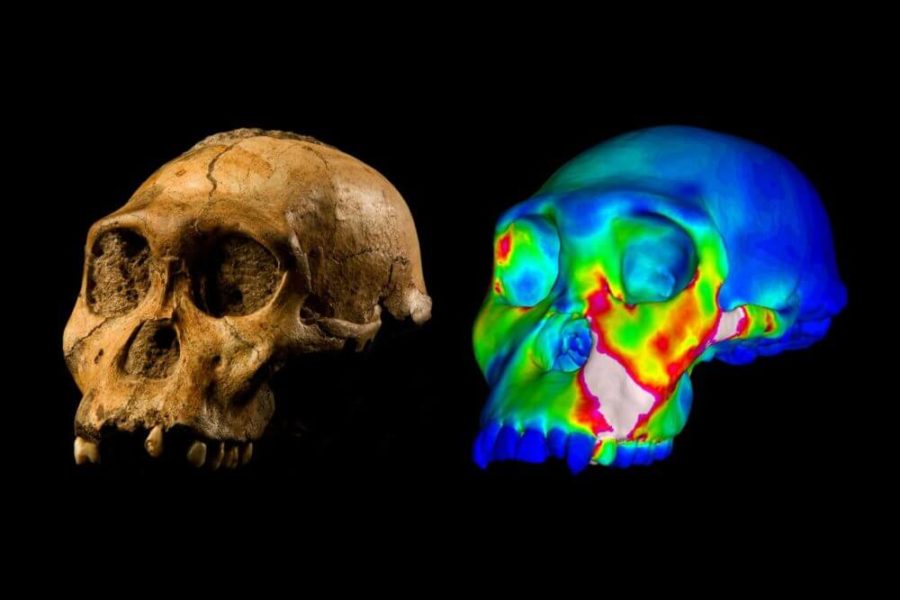South Africa’s Australopithecus sediba, discovered in 2008 at the renowned archaeological site of Malapa in the Cradle of Humankind World Heritage Site, is again helping us to study and understand the origins of humans.
Research published in 2012 garnered international attention by suggesting that this possible early human ancestor had lived on a diverse woodland diet including hard foods mixed in with tree bark, fruit, leaves and other plant products.
But new research by an international team of researchers, including Professors Lee Berger and Kristian Carlson from the Evolutionary Studies Institute (ESI) at the University of the Witwatersrand, now shows that Australopithecus sediba didn’t have the jaw and tooth structure necessary to exist on a steady diet of hard foods.
“Most australopiths had amazing adaptations in their jaws, teeth and faces that allowed them to process foods that were difficult to chew or crack open. Among other things, they were able to efficiently bite down on foods with very high forces,” says Professor David Strait, team leader and anthropologist from Washington University in St. Louis, US.
Adds co-author Dr Justin Ledogar, researcher at the University of New England in Australia: “Australopithecus sediba is thought by some researchers to lie near the ancestry of Homo, the group to which our species belongs yet we find that A. sediba had an important limitation on its ability to bite powerfully; if it had bitten as hard as possible on its molar teeth using the full force of its chewing muscles, it would have dislocated its jaw.”
The study – published today, 8 February 2016, in the journal Nature Communications – describes biomechanical testing of a computer-based model of an Australopithecus sedibaskull.
The model is based on the fossil skull recovered by Berger’s team in 2008 from Malapa, a cave some 40kms west from Johannesburg, South Africa. The biomechanical methods used in the study are similar to those used by engineers to test whether or not planes, cars, machine parts or other mechanical devices are strong enough to avoid breaking during use.
“These unexpected, but clearly intriguing, findings of the study are substantiated by the team of scientists having spent over a decade conducting meticulous, thorough experimental research on chewing mechanics in order to validate this application of computer-assisted modelling,” Carlson, a Reader in the ESI says.
Berger, Carlson, and Professor Darryl de Ruiter (Texas A&M University, US) are some of the researchers who described A. sediba and are also authors on the biomechanical study.
Adds Carlson: “This collaborative research effort underscores the crucial scientific benefits that South African scientists enjoy as a result of the formal association between South Africa’s Department of Science and Technology and the European Synchrotron Radiation Facility (ESRF) in Grenoble, France.”
About Australopithecus sediba:
Australopithecus sediba, a diminutive pre-human species that lived about two million years ago in southern Africa, has been heralded as a possible ancestor or close relative of Homo.
Australopiths appear in the fossil record about four million years ago, and although they have some human traits such as the ability to walk upright on two legs, most of them lack other characteristically human features such as a large brain, flat faces with small jaws and teeth, and advanced tool-use.
Humans, members of the genus Homo, are almost certainly descended from an australopith ancestor, and A. sediba is a candidate to be either that ancestor or something similar to it.


